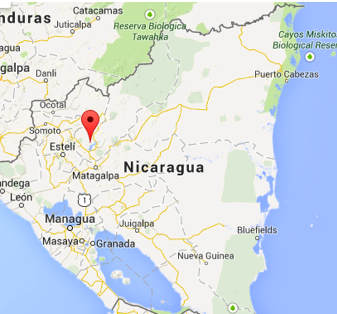Asturias, Nicaragua
![]()
![]()
![]()
![]()
![]()
![]()
![]()
![]()
![]() Click on Programs to learn more about their work in this community
Click on Programs to learn more about their work in this community
General Information

| Population* | 9773 |
| Number of Homes | 1954 |
| Avg # of people per home | 5 |
| Number & Percentage of Children |
0-5 (10%): 496 6-14 (18%): 4164 |
| Electricity | Yes |
| Municipality | Jinotega |
| Department | Jinotega |
| Health Center | Yes |
| Distance from compounds | ~2 hours |
| Road conditions | Paved |
* Population does not reflect how many patients will be seen on Medical
Brigades as many people from surrounding communities come seeking
Medical Brigades medical attention.
Top Three Needs Expressed
• Water system: Water that will reach 100% of households.
• Latrines: 600 homes in nead of latrines
• Housing: Repairs or additions on homes
Asturias has a school that shifts from 389 elementary students in the morning and 82 high school students in the afternoon. It also serves 154 high school students on Saturdays. Since this is a central community for many
territories, students visit from many surrounding communitites.
About 10 years ago the government built a water system which, at the time supplied water to all homes in the community. Since then, the community has grown and there is not enough water to supply all of the homes. Usually the homes will have water every other day for only about 3 hours. People often go to the lake to use as a bathroom or place to wash clothes.
The health center in this community was built 10 years ago by the governement. It has 4 offices, a waiting room, a pharmacy and 1 full-time caregiver (except weekends). The difficulty is the lack of medications and supplies.
The main source of income in this population is growing coffee, cabbage, tomatoes, oinios, potatoes, and fishing. The land is owned by a few and most of the population are laborers working on the land.
There are currently no other organizations working in this area.